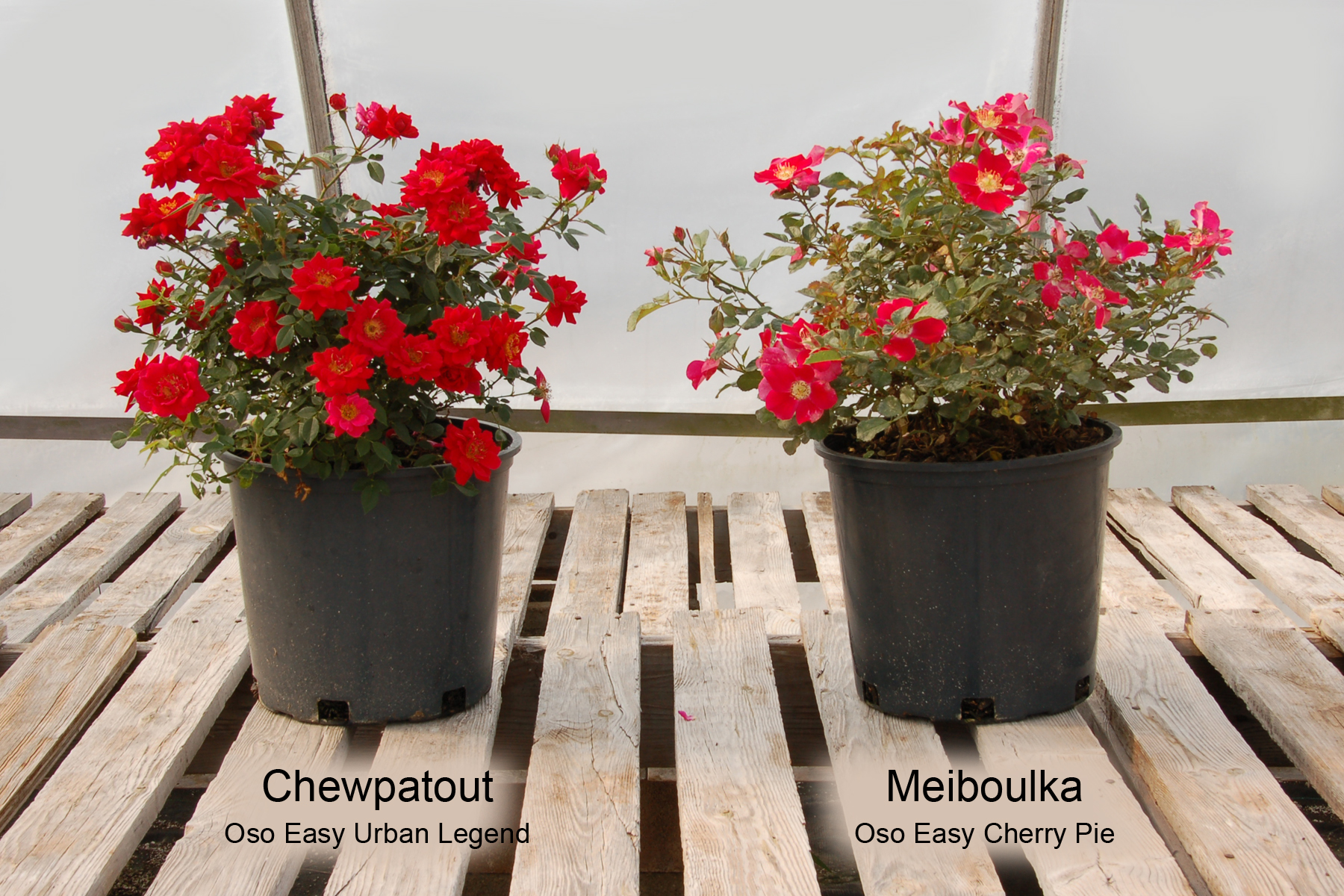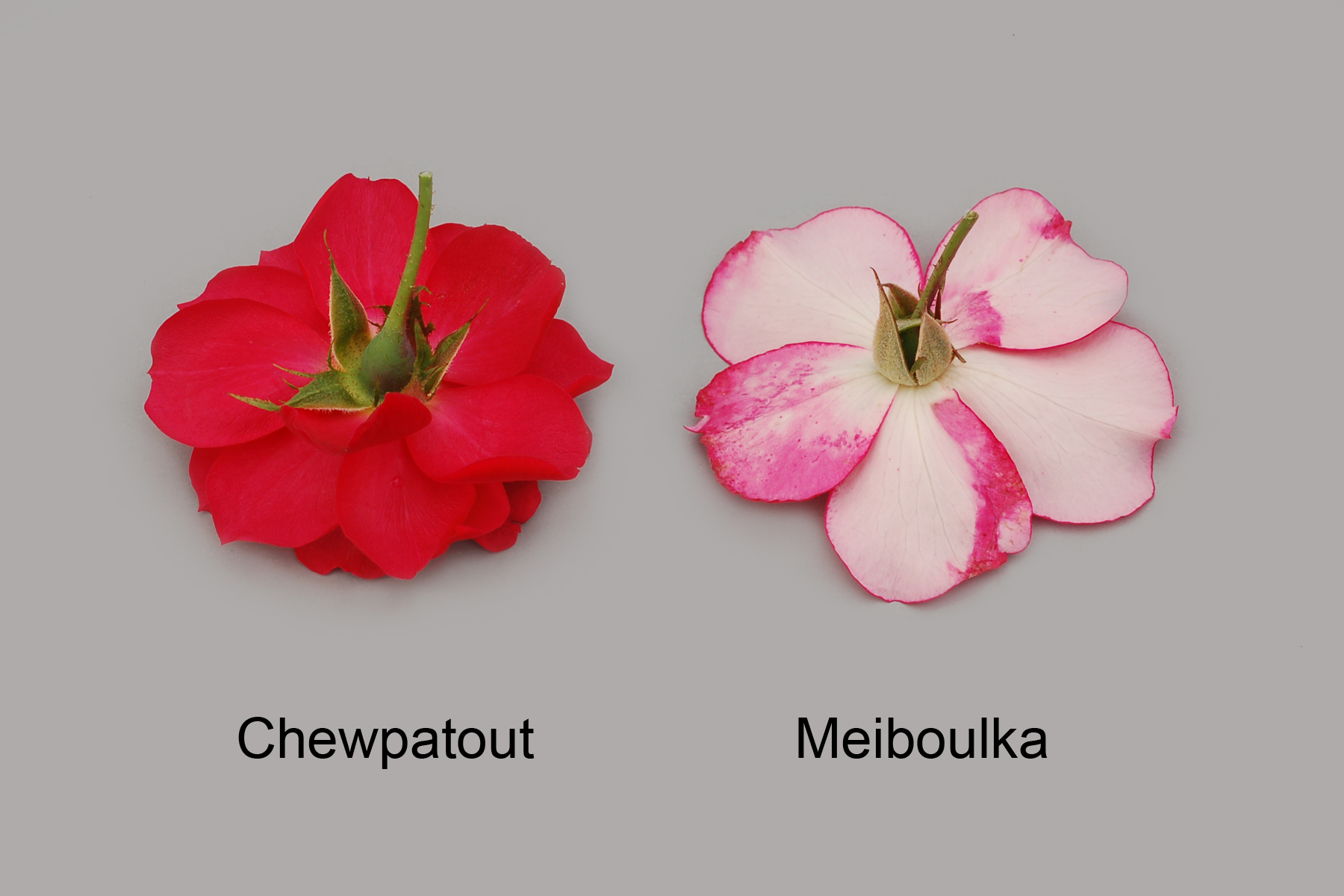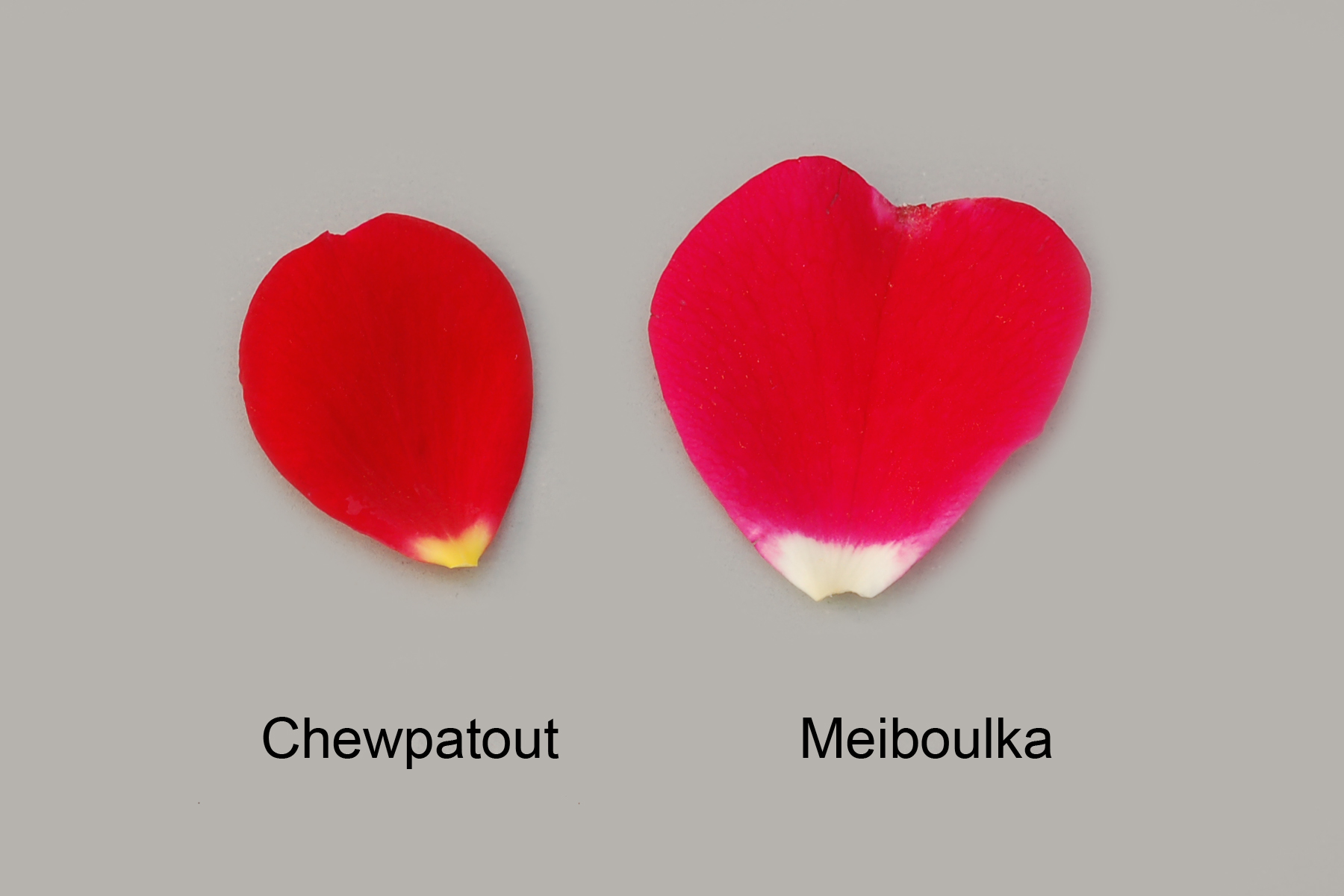Chewpatout
| Denomination: | 'Chewpatout' |
|---|---|
| Trade name: | Oso Easy Urban Legend |
| Botanical Name: | Rosa |
| Applicant/Holder: |
Spring Meadow Nursery, Inc. 12601 120th Avenue Grand Haven, Michigan 49417 United States of America |
| Breeder: |
Christopher Hugh Warner, Newport, Shropshire, United Kingdom |
| Agent in Canada: |
BioFlora Inc. 38723 Fingal Line R.R. #1 St. Thomas, Ontario N5P 3S5 Canada Tel: 519-317-7511 |
| Application Date: | 2015-08-07 |
| Provisional Protection:: | 2015-08-07 |
| Application Number: | 15-8713 |
| Grant of Rights Date: | 2018-11-05 |
| Certificate Number: | 5831 |
| Grant of Rights Termination Date: | 2038-11-05 |
Variety Description
Variety used for comparison: 'Meiboulka' (Oso Easy Cherry Pie)
Summary: The terminal leaflet of 'Chewpatout' is ovate in shape and longer and narrower than the terminal leaflet of 'Meiboulka', which is medium elliptic to almost circular in shape. The terminal leaflet of 'Chewpatout' has an obtuse base and an acuminate apex while the terminal leaflet of 'Meiboulka' has a rounded base and a broadly acute apex. The leaflet margin of 'Chewpatout' has absent or very weak undulation while that of 'Meiboulka' has weak to medium undulation. The flower of 'Chewpatout' is a semi-double to double type whereas the flower of 'Meiboulka' is a single type. The number of petals per flower is greater for 'Chewpatout' than it is for that of 'Meiboulka'. The sepal of 'Chewpatout' has medium extensions while that of 'Meiboulka' has weak extensions. The petal of 'Chewpatout' is narrower than that of 'Meiboulka'. The basal spot on the inner side of the petal of 'Chewpatout' is very small and yellow whereas the basal spot of 'Meiboulka' is small to medium sized and white with yellow at the base. The outer side of the petal of 'Chewpatout' is dark pink red while that of 'Meiboulka' is violet to light blue pink.
Description:
PLANT: shrub type, intermediate between semi-upright and moderately spreading growth habit
YOUNG SHOOT: medium to strong intensity of anthocyanin colouration
PRICKLES: medium number of thorns, medium to many prickles, mostly reddish
NEW LEAF: no anthocyanin colouration on upper side
LEAF: medium green on upper side, no anthocyanin colouration, medium to strong glossiness on upper side, absent or very weak undulation of margin
TERMINAL LEAFLET: ovate shaped, obtuse base, acuminate apex
FLOWERING SHOOT: medium number of flowering laterals, medium number of flowers per lateral
FLOWER BUD: medium ovate shape in longitudinal section, dark purple red (close to RHS 53B)
FLOWER: semi-double to double type, red colour group, red centre, medium petal density, irregularly rounded shape when viewed from above, profile of upper part is flattened convex, profile of lower part is flat to slightly concave, medium fragrance, medium sepal extensions
PETAL: no reflexing of petals one-by-one, obovate shape, absent or very weak incisions, weak reflexing of margin, medium undulation of margin, one colour on inner side, colour intensity is even, inner side is red (RHS 46B) with brighter red (RHS 45B) tones aging to purple red (RHS N57A-C), outer side is dark pink red (darker than RHS 51A)
BASAL SPOT: very small, yellow (close to RHS 7B)
OUTER STAMEN: medium yellow filament, weak intensity of anthocyanin colouration present
Origin & Breeding History: 'Chewpatout' originated from a controlled cross conducted by the breeder, Christopher Hugh Warner, in Newport, Shropshire, United Kingdom in June 2005. The cross was made between the variety 'Pathfinder', as the female parent, and the variety 'Knockout Radrazz', as the male parent. From the resulting progeny, 'Chewpatout' was selected in June 2007 based on its continuous blooming, bright red flower colour and disease resistance. Asexual reproduction of 'Chewpatout' was first conducted by budding in July 2008 in Brockton, Newport, Shropshire, United Kingdom.
Tests & Trials: The comparative trial for 'Chewpatout' was conducted as an outdoor irrigated container trial during the summer of 2017 in St. Thomas, Ontario. The trial included a total of 9 plants of the candidate variety and 10 plants of the reference variety. All plants were grown from 10 cm rooted liners and transplanted into 11 litre containers in July 2016. The plants were overwintered in an above-zero double polyhouse and moved outdoors in early spring 2017. Observations and measurements were taken from 10 plants, or 10 parts of plants, of each variety on August 8, 2017. All colour determinations were made using the 2007 Royal Horticultural Society (RHS) Colour Chart.
Comparison tables for 'Chewpatout' with reference variety 'Meiboulka'
Terminal leaf length (cm)
| 'Chewpatout' | 'Meiboulka' | |
|---|---|---|
| mean | 3.1 | 2.5 |
| std. deviation | 0.15 | 0.22 |
Terminal leaf width (cm)
| 'Chewpatout' | 'Meiboulka' | |
|---|---|---|
| mean | 1.5 | 2.0 |
| std. deviation | 0.28 | 0.23 |
Number of petals per flower (count)
| 'Chewpatout' | 'Meiboulka' | |
|---|---|---|
| mean | 19.4 | 5.0 |
| std. deviation | 0.52 | 0.00 |
Petal width (cm)
| 'Chewpatout' | 'Meiboulka' | |
|---|---|---|
| mean | 1.8 | 2.7 |
| std. deviation | 0.07 | 0.28 |
Colour of petal (RHS)
| 'Chewpatout' | 'Meiboulka' | |
|---|---|---|
| outer side | darker than 51A | 75C-D |
Click on image for larger view

Rose: 'Chewpatout' (left) with reference variety 'Meiboulka' (right)
Click on image for larger view

Rose: 'Chewpatout' (left) with reference variety 'Meiboulka' (right)
Click on image for larger view

Rose: 'Chewpatout' (left) with reference variety 'Meiboulka' (right)
- Date modified: